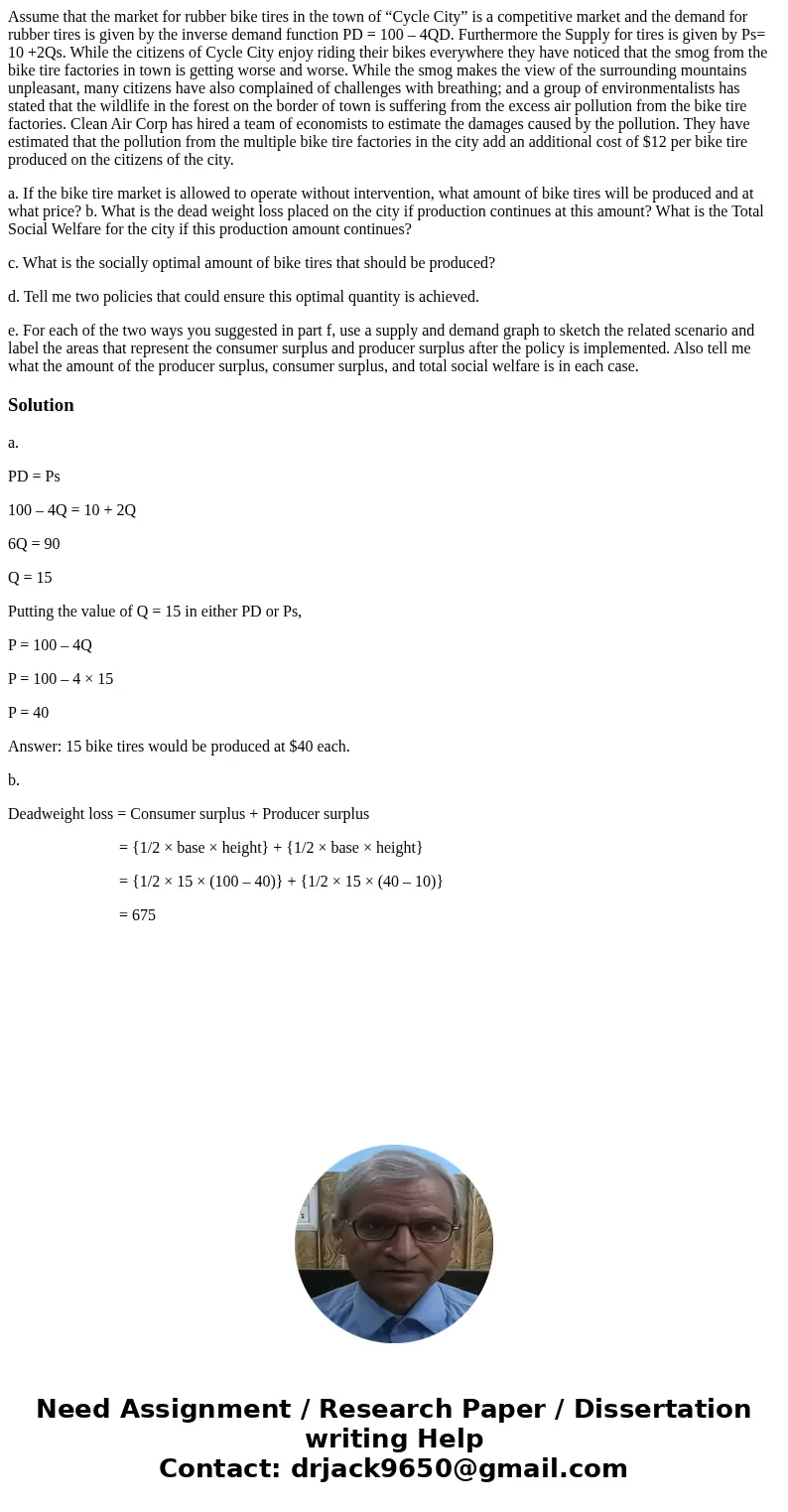Assume that the market for rubber bike tires in the town of
Assume that the market for rubber bike tires in the town of “Cycle City” is a competitive market and the demand for rubber tires is given by the inverse demand function PD = 100 – 4QD. Furthermore the Supply for tires is given by Ps= 10 +2Qs. While the citizens of Cycle City enjoy riding their bikes everywhere they have noticed that the smog from the bike tire factories in town is getting worse and worse. While the smog makes the view of the surrounding mountains unpleasant, many citizens have also complained of challenges with breathing; and a group of environmentalists has stated that the wildlife in the forest on the border of town is suffering from the excess air pollution from the bike tire factories. Clean Air Corp has hired a team of economists to estimate the damages caused by the pollution. They have estimated that the pollution from the multiple bike tire factories in the city add an additional cost of $12 per bike tire produced on the citizens of the city.
a. If the bike tire market is allowed to operate without intervention, what amount of bike tires will be produced and at what price? b. What is the dead weight loss placed on the city if production continues at this amount? What is the Total Social Welfare for the city if this production amount continues?
c. What is the socially optimal amount of bike tires that should be produced?
d. Tell me two policies that could ensure this optimal quantity is achieved.
e. For each of the two ways you suggested in part f, use a supply and demand graph to sketch the related scenario and label the areas that represent the consumer surplus and producer surplus after the policy is implemented. Also tell me what the amount of the producer surplus, consumer surplus, and total social welfare is in each case.
Solution
a.
PD = Ps
100 – 4Q = 10 + 2Q
6Q = 90
Q = 15
Putting the value of Q = 15 in either PD or Ps,
P = 100 – 4Q
P = 100 – 4 × 15
P = 40
Answer: 15 bike tires would be produced at $40 each.
b.
Deadweight loss = Consumer surplus + Producer surplus
= {1/2 × base × height} + {1/2 × base × height}
= {1/2 × 15 × (100 – 40)} + {1/2 × 15 × (40 – 10)}
= 675

 Homework Sourse
Homework Sourse